Want to catch up with other articles from this series?
- The straight dope on cholesterol – Part I
- The straight dope on cholesterol – Part II
- The straight dope on cholesterol – Part III
- The straight dope on cholesterol – Part IV
- The straight dope on cholesterol – Part V
- The straight dope on cholesterol – Part VI
- The straight dope on cholesterol – Part VII
- The straight dope on cholesterol – Part VIII
- The straight dope on cholesterol – Part IX
I’ve been planning to write at length about this topic for a few months, but I’ve been hesitant to do so for several reasons:
- To discuss it properly requires great care and attention (mine and yours, respectively).
- My own education on this topic only really began about 9 months ago, and I’m still learning from my mentors at a geometric pace.
- This topic can’t be covered in one post, even a Peter-Attia-who-can’t-seem-to-say-anything-under-2,000-word post.
- I feel a bit like an imposter writing about lipidology because my mentors on this topic (below) have already addressed this topic so well, I’m not sure I have anything to add.
But here’s the thing. I am absolutely – perhaps pathologically – obsessed with lipidology, the science and study of lipids. Furthermore, I’m getting countless questions from you on this topic. Hence, despite my reservations above, I’m going to give this a shot.
A few thoughts before we begin.
- I’m not even going to attempt to cover this topic entirely in this post, so please hold off on asking questions beyond the scope of this post.
- Please resist the urge to send me your cholesterol numbers. I get about 30 such requests per day, and I cannot practice medicine over the internet. By all means, share your story with me and others, but understand that I can’t really comment other than to say what I pretty much say to everyone: standard cholesterol testing (including VAP) is largely irrelevant and you should have a lipoprotein analysis using NMR spectroscopy (if you don’t know what I mean by this, that’s ok… you will soon).
- This topic bears an upsettingly parallel reality to that of nutrition “science” in that virtually all health care providers have no understanding of it and seem to only reiterate conventional wisdom (e.g., “LDL is bad,” “HDL is good”). We’ll be blowing the doors off this fallacious logic.
By the end of this series, should you choose to internalize this content (and pick up a few homework assignments along the way), you will understand the field of lipidology and advanced lipid testing better than 95% of physicians in the United States. I am not being hyperbolic.
One last thing before jumping in: Everything I have learned and continue to learn on this topic has been patiently taught to me by the words and writings of my mentors on this subject: Dr. Tom Dayspring, Dr. Tara Dall, Dr. Bill Cromwell, and Dr. James Otvos. I am eternally in their debt and see it as my duty to pass this information on to everyone interested.
Are you ready to start an exciting journey?
Concept #1 – What is cholesterol?
Cholesterol is a 27-carbon molecule shown in the figure below. Each line in this figure represents a bond between two carbon atoms. Sorry, I’ve got to get it out there. That’s it. Mystery over.
All this talk about “cholesterol” and most people don’t actually know what it is. So there you have it. Cholesterol is “just” another organic molecule in our body.
I need to make one important distinction that will be very important later. Cholesterol, a steroid alcohol, can be “free” or “unesterified” (“UC” as we say, which stands for unesterified cholesterol) which is its active form, or it can exist in its “esterified” or storage form which we call a cholesterol ester (“CE”). The diagram above shows a free (i.e., UC) molecule of cholesterol. An esterified variant (i.e., CE) would have an “attachment” where the arrow is pointing to the hydroxyl group on carbon #3, aptly named the “esterification site.”
Since cholesterol can only be produced by organisms in the Animal Kingdom it is termed a zoosterol. In a subsequent post I will write about a cousin of cholesterol called phytosterol, but at this time I think the introduction would only confuse matters. So, if you have a question about phytosterols, please hang on.
Concept #2 – What is the relationship between the cholesterol we eat and the cholesterol in our body?
We ingest (i.e., take in) cholesterol in many of the foods we eat and our body produces (“synthesizes”) cholesterol de novo from various precursors. About 25% of our daily “intake” of cholesterol – roughly 300 to 500 mg — comes from what we eat (called exogenous cholesterol), and the remaining 75% of our “intake” of cholesterol — roughly 800 to 1,200 mg – is made by our body (called endogenous production). To put these amounts in context, consider that total body stores of cholesterol are about 30 to 40 gm (i.e., 30,000 to 40,000 mg) and most of this resides within our cell membranes. Every cell in the body can produce cholesterol and thus very few cells actually require a delivery of cholesterol. Cholesterol is required by all cell membranes and to produce steroid hormones and bile acids.
Of this “made” or “synthesized” cholesterol, our liver synthesizes about 20% of it and the remaining 80% is synthesized by other cells in our bodies. The synthesis of cholesterol is a complex four-step process (with 37 individual steps) that I will not cover here (though I will revisit), but I want to point out how tightly regulated this process is, with multiple feedback loops. In other words, the body works very hard (and very “smart”) to ensure cellular cholesterol levels are within a pretty narrow band (the overall process is called cholesterol homeostasis). Excess cellular cholesterol will crystalize and cause cellular apoptosis (programmed cell death). Plasma cholesterol levels (which is what clinicians measure with standard cholesterol tests) often have little to do with cellular cholesterol, especially artery cholesterol, which is what we really care about. For example, when cholesterol intake is decreased, the body will synthesize more cholesterol and/or absorb (i.e., recycle) more cholesterol from our gut. The way our body absorbs cholesterol is so amazing, so I want to spend a bit of time discussing it.
In medical school, whenever we had to study physiology or pathology I always had a tendency to want to anthropomorphize everything. It’s just how my brain works, I guess, and understanding cholesterol absorption is a great example of this sort of thinking. The figure below, from the Gastroenterology Journal, shows a cross-section of a cell in our small intestine (i.e., our “gut”) called an enterocyte that governs how stuff in our gut actually gets absorbed. The left side with the fuzzy border is the side facing the “lumen” (the inside of the “tube” that makes up our gut). You’ll notice two circles on that side of the cell, a blue one and a pink one.
[What follows is a bit more technical than I would have liked, but I think it’s very important to understand how this process of cholesterol absorption works. It’s certainly worth reading this a few times to make sure it sinks in.]
- The blue circle represents something called a Niemann-Pick C1-like 1 protein (NPC1L1). It sits at the apical surface of enterocytes and it promotes active influx (i.e., bringing in) of gut luminal unesterified cholesterol (UC) as well as unesterified phytosterols into the enterocyte. Think of this NPC1L1 as the ticket-taker at the door of the bar (where the enterocyte is the “bar”); he lets most cholesterol (“people”) in. However, NPC1L1 cannot distinguish between cholesterol (“good people”) and phytosterol (“bad people” – I will discuss these guys later, so no need to worry about it now) or even too much cholesterol (“too many people”). [I can’t take any credit for this anthropomorphization – this is how Tom Dayspring explained it to me!]
- The pink circle represents an adenosine triphosphate (ATP)-binding cassette (ABC) transporters ABCG5 and ABCG8. This complex promotes active efflux (i.e., kicking out) of unesterified sterols (cholesterol and plant sterols – of which over 40 exist) from enterocytes back into the intestinal lumen for excretion. Think of ABCG5,G8 as the bouncer at the bar; he gets rid of the really bad people (e.g., phytosterols as they serve no purpose in humans) you don’t want in the bar who snuck past the ticket-taker (NPC1L1). Of course in cases of hyperabsorption (i.e., in cases where the gut absorbs too much of a good thing) they can also efflux out un-needed cholesterol. Along this analogy, once too many “good people” get in the bar, fire laws are violated and some have to go. The enterocyte has “sterol-excess sensors” (a nuclear transcription factor called LXR) that do the monitoring and these sensors activate the genes that regulate NPC1L1 and ABCG5,G8).
There is another nuance to this, which is where the CE versus UC distinction comes in:
- Only free or unesterified cholesterol (UC) can be absorbed through gut enterocytes. In other words, cholesterol esters (CE) cannot be absorbed because of the bulky side chains they carry.
- Much (> 50%) of the cholesterol we ingest from food is esterified (CE), hence we don’t actually absorb much, if any, exogenous cholesterol (i.e., cholesterol in food). CE can be de-esterified by pancreatic lipases and esterolases – enzymes that break off the side branches and render CE back to UC — so some ingested CE can be converted to UC.
- Furthermore, most of the unesterified cholesterol (UC) in our gut (on the order of about 85%) is actually of endogenous origin (meaning it was synthesized in bodily cells and returned to the liver), which ends up in the gut via biliary secretion and ultimately gets re-absorbed by the gut enterocyte. The liver is only able to efflux (send out via bile into the gut) UC, but not CE, from hepatocytes (liver cells) to the biliary system. Liver CE cannot be excreted into bile. So, if the liver is going to excrete CE into bile and ultimately the gut, it needs to de-esterify it using enzymes called cholesterol esterolases which can convert liver CE to UC.
- Also realize that the number one way for the liver to rid itself of cholesterol is to convert the cholesterol into a bile acid, efflux that to the bile (via a transporter called ABCB11) and excrete the bile acids in the stool (typically most bile acids are reabsorbed at the ileum).
Concept #3 – Is cholesterol bad?
One of the biggest misconceptions out there (maybe second only to the idea that eating fat makes you fat) is that cholesterol is “bad.” This could not be further from the truth. Cholesterol is very good! In fact, there are (fortunately rare) genetic disorders in which people cannot properly synthesize cholesterol. Once such disease is Smith-Lemli-Opitz syndrome (also called “SLOS,” or 7-dehydrocholesterol reductase deficiency) which is a metabolic and congenital disorder leading to a number of problems including autism, mental retardation, lack of muscle, and many others.
Cholesterol is absolutely vital for our existence. Let me repeat: Cholesterol is absolutely vital for our existence. Every cell in our body is surrounded by a membrane. These membranes are largely responsible for fluidity and permeability, which essentially control how a cell moves, how it interacts with other cells, and how it transports “important” things in and out. Cholesterol is one of the main building blocks used to make cell membranes (in particular, the ever-important “lipid bilayer” of the cell membrane).
Beyond cholesterol’s role in allowing cells to even exist, it also serves an important role in the synthesis of vitamins and steroid hormones, including sex hormones and bile acids. Make sure you take a look at the picture of steroid hormones synthesis and compare it to that of cholesterol (above). If this comparison doesn’t convince you of the vital importance of cholesterol, nothing I say will.
One of the unfortunate results of the eternal need to simplify everything is that we (i.e., the medical establishment) have done the public a disservice by failing to communicate that there is no such thing as “bad” cholesterol or “good” cholesterol. All cholesterol is good!
The only “bad” outcome is when cholesterol ends up inside of the wall of an artery, most famously the inside of a coronary artery or a carotid artery, AND leads to an inflammatory cascade which results in the obstruction of that artery (make sure you check out the pictures in the links, above). When one measures cholesterol in the blood – we really do not know the final destination of those cholesterol molecules!
And that’s where we’ll pick it up next time – how does “good” cholesterol end up in places it doesn’t belong and cause “bad” problems? If anyone is looking for a little extra understanding on this topic, please, please, please check out my absolute favorite reference for all of my cholesterol needs, LecturePad. It’s designed primarily for physicians, but I suspect many of you out there will find it helpful, if not now, certainly once we’re done with this series.
To summarize this somewhat complex issue
- Cholesterol is “just” another fancy organic molecule in our body, but with an interesting distinction: we eat it, we make it, we store it, and we excrete it – all in different amounts.
- The pool of cholesterol in our body is essential for life. No cholesterol = no life.
- Cholesterol exists in 2 forms – UC and CE – and the form determines if we can absorb it or not, or store it or not (among other things).
- Most of the cholesterol we eat is not absorbed and is excreted by our gut (i.e., leaves our body in stool). The reason is it not only has to be de-esterified, but it competes for absorption with the vastly larger amounts of UC supplied by the biliary route.
- Re-absorption of the cholesterol we synthesize in our body is the dominant source of the cholesterol in our body. That is, most of the cholesterol in our body was made by our body.
- The process of regulating cholesterol is very complex and multifaceted with multiple layers of control. I’ve only touched on the absorption side, but the synthesis side is also complex and highly regulated. You will discover that synthesis and absorption are very interrelated.
- Eating cholesterol has very little impact on the cholesterol levels in your body. This is a fact, not my opinion. Anyone who tells you different is, at best, ignorant of this topic. At worst, they are a deliberate charlatan. Years ago the Canadian Guidelines removed the limitation of dietary cholesterol. The rest of the world, especially the United States, needs to catch up.

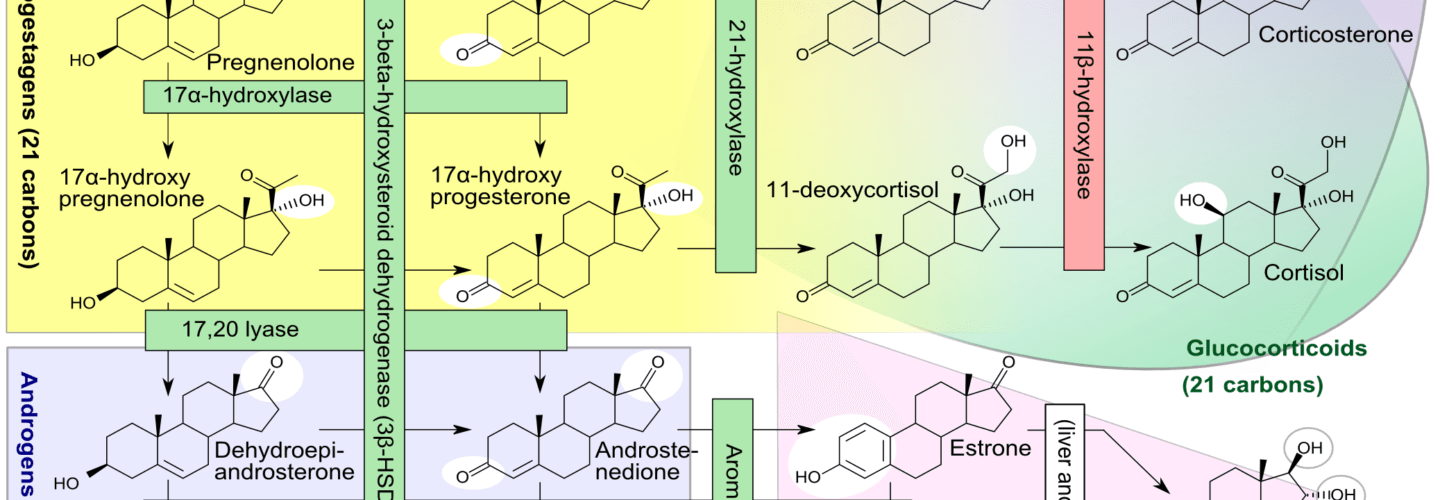
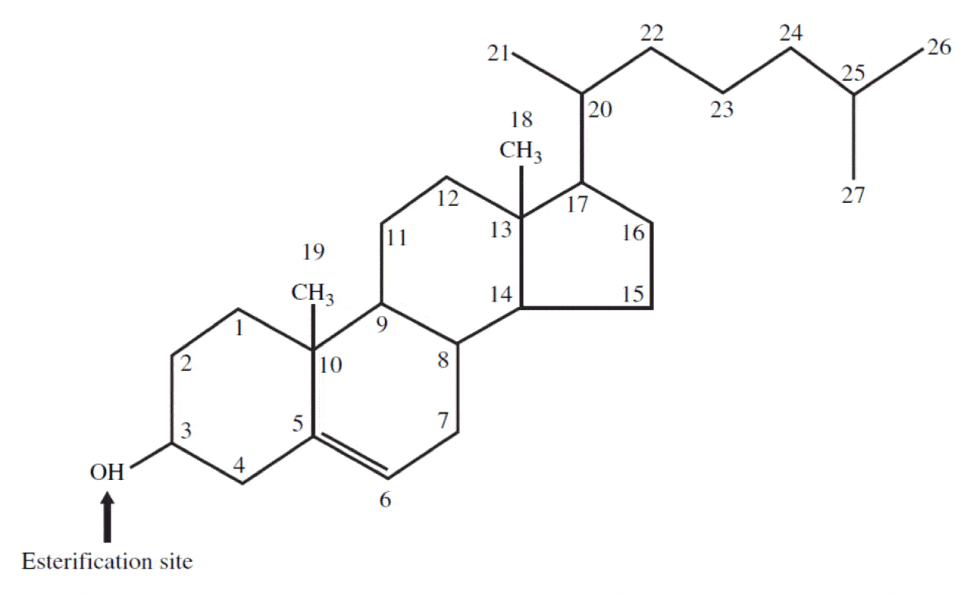
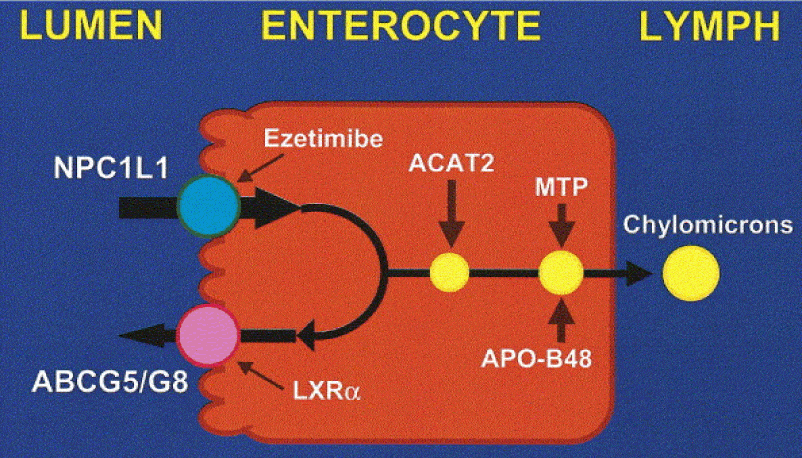
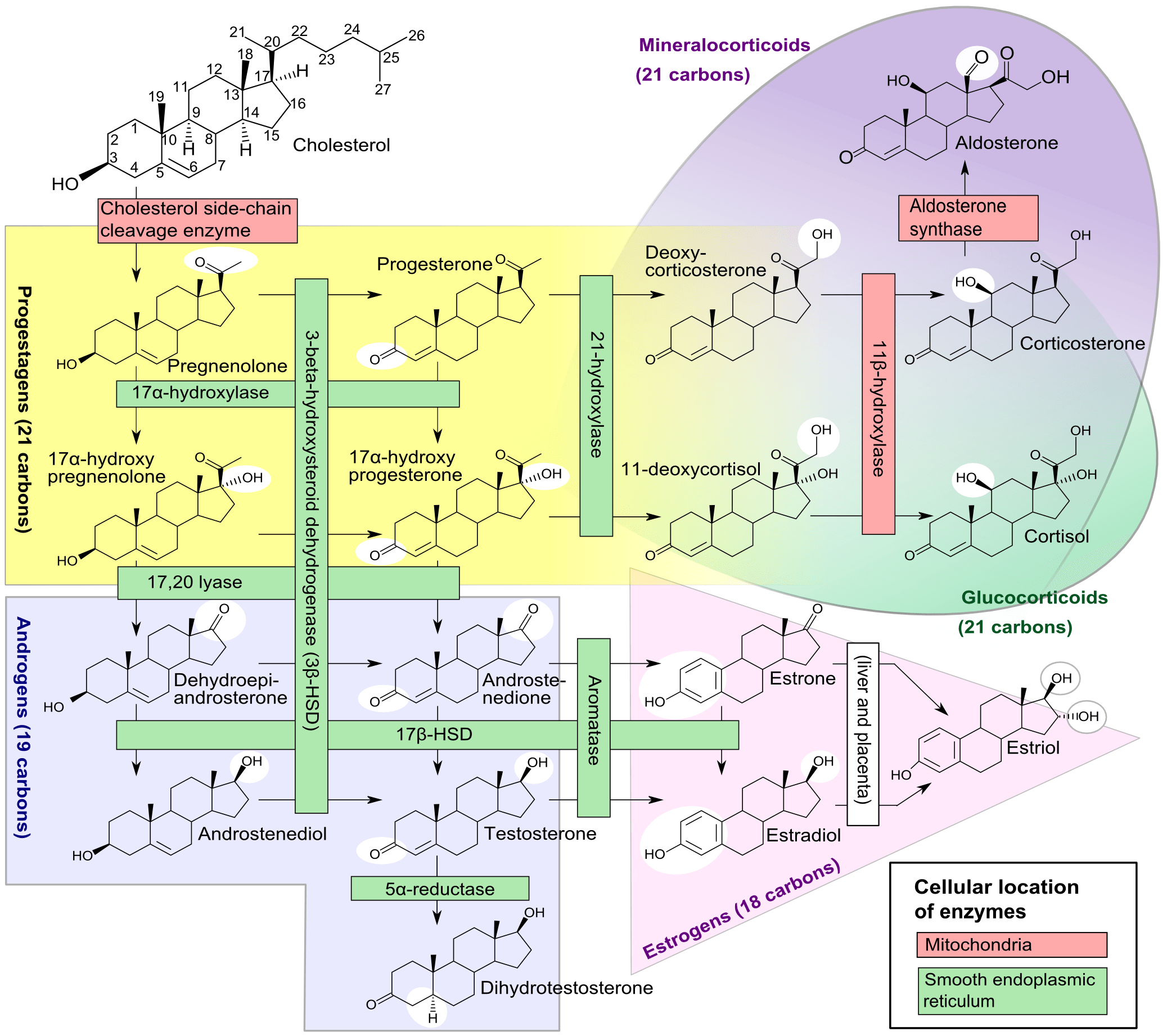
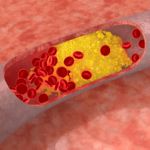
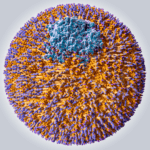

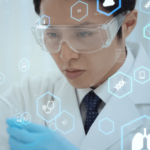
Should we just abandon LDL as a treatment target? One Yale medical professor says yes:
https://www.youtube.com/watch?feature=player_embedded&v=gpdAdkyMemg
Greensleeves, If you mean LPL-C – then yes it has little value. LPL-P is another story. I found out today that both blood draws I have had to get the NMR lipid profile were screwed up and I have to get it done yet again.
Looking at the NMR lipid profile website http://www.theparticletest.com I found that they are pretty clueless in how to lower LPL-P. The following is cut and pasted from their website:
START WITH EATING RIGHT
Eat more whole grains, fruits and vegetables. Eating more of these foods, like whole-wheat pasta, beans, nuts, berries, spinach and broccoli, are good for your heart. Limit your red meat — like steak and hamburgers — eat fish at least once a week and lean turkey or chicken without the skin. Use olive oil or canola oil in place of butter. Avoid fried foods or those meals served with heavy sauces.
In my case, hopefully the 3rd time will be the charm.
David — I am on that website now. I am not done snooping around, but so far I cannot find any such dietary recommendation; however, is this not counter to everything we (you know the ‘we’ I am referencing) are aiming for!?
Wait . . . it’s a joke, right?!
I stumbled upon this article from JAMA in 2003 which found higher levels of APO-B in patients undergoing the ketogenic diet. From what I understand APO-B is more closely related to cardiac disease than other lipid profile measures: https://jama.ama-assn.org/content/290/7/912.full
What do you think of the conclusions? JAMA is fairly reputable and not many crappy studies slip through the cracks.
I’ll give it a read when I get some time, but please don’t assume something is “good” because it’s in JAMA or NEJM. Lots of good AND bad stuff in all journals, including the most prestigious.
Hi Peter,
I would be interested to know what you think about looking at lp(a) to measure heart disease risk. Is research showing that there is a high concentration of lp(a)in atherosclerotic plaques reliable? Finally if levels of lp(a) are determined by genes what can you do to lower it? Niacin?
Thanks again for your great work!
All — I just discovered Peter’s wonderful work and your many excellent comments, and, while I am 3 months late to this thread, I’ll add two questions here and hope for the best while trying to get caught up!
Kypros — Thank you for your question about lp(a) – particularly important when one has both alleles for this gene (as I do) — as I am on both Lipitor (generic) and heavy daily doses of Niacin.
Peter — Maybe I have missed it, but is there a reason why you have not recommended the Berkeley Lab test for at least some individuals when it provides such detailed info about the many different types & sizes of both HDL and LDL particles as well crucial genetic profile data?
Thank you, and best to all!
I’m not convinced (yet–but I’m open to changing my mind) that particle size is as important as particle number. I prefer NMR by HDL, Inc. (using Liposcience) than BL, but BL is fine, too.
Peter,
Great post as always. I entered ketosis about a month ago and have felt great while dropping some unnecessary fat stores. Through this process I have developed a few questions that I would value your insight into:
1. Is there a way to back into the rate of fat loss using a fasted blood ketone level?
2. How significantly does caffeine affect insulin levels when eating primarily fat and protein (I noticed that Australian ketogenic diet recommendation include the elimination of caffeine from the diet)?
Thanks!
1. Not in a reliable manner. People are wondering if a fat-secreted hormone, adiponectin, might play a role there, but not B-OHB.
2. I’ll cover this in the future, but it does appear that caffeine does impact insulin in some people.
You can now get direct Apo B thru Atherotech when ordering VAP, has been available now for about a year
I Too am a supporter of our chloresterol!! Having been told by my Dr here in the UK that despite my being at the right weight (BMI 24) my chloresterol figures, were in her opinion, too high, (the “Good” and “bad” were almost the same figures and as we measure ours differently to the USA I won’t quote them here) and I had to lose at least 14lbs I more or less told her thanks but no thanks and left. I have had to change my diet anyway because of milk and yeast intolerances which have had the side effects of altering my chloresterol figures anyway so I don’t need the hassle. I feel marvellous because I no longer have IBS and am not so tired and at nearly 60 feel fitter than i did at 30!!
My guru on the subject of Choleresterol is Dr Malcolm Kendrick. He wrote a book called “The Chloresterol Con” here in the UK and it has become my bible. It debunks the statin debate and shows that the only way to keep healthy is to follow a sensible lifestyle. I think the only reason that statins have become the panaceas they have is that they are seen as a “fix all” without anyone having to change their lifestyle. They can continue to be overweight, eat crap and sit on their bums, the pills will keep them going!!!!
I do think that the 21st Century diet is the killer. The chemicals we spray on and add to our food, the muck that is in the air, and the god knows what that is in our water all lead to a cocktail of sludge that gets into our bodies. I am not a “lentil cruncher” I like a good steak, but an organic one that has come from a bullock that has been in a field eating good grass with the sun on his back and has led a happy life! Too much to ask for?
We reap what we sow. We must not only question our DRs but also they way we eat and what we eat. The air we breathe and the water we drink. It is encumbant on us to think of our grandchildren and what we are leaving behind for them.
I’m not a physician or otherwise knowledgeable about the hard sciences so I’ve had to read these articles a few times to understand a good portion of what you’re saying – please excuse this if it is a dumb question: Can you explain more about why we don’t need to worry about ingested/exogenous cholesterol? If our body makes all it needs we don’t need any from our food, right? Even though >50% of dietary cholesterol is CE, doesn’t that still leave a significant amount (<50% of total)of exogenous UC for the body to absorb? It seems to me that if you have a cholesterol-rich diet these numbers could really add up over what the body needs.
The body is smarter than us. If you give it too much, it’s probably going to respond by changing esterification and/or absorption. Ultimately, the data get the final say: when this is studied, there is not link between ingested cholesterol and atherogenic particles.
Is there a breaking point? The pancreas secretes insulin when we eat too much sugar, but we can break that mechanism through overuse and wind up with diabetes. Have any studies shown if we can similarly break the mechanism that clears excess exogenous UC cholesterol?
I don’t know.
Been away from the blog for a couple weeks Pete, and the first post I catch up on blows my mind! Especially this:
Eating cholesterol has very little impact on the cholesterol levels in your body. This is a fact, not my opinion.
Can’t wait to read the rest. And if eating cholesterol does next to nothing harmful, there’s no reason to not keep eating it. Can’t wait for lunch!
My man! You’ve got some serious work ahead of you! Hope you’ve got some free time in the next few days…
Hi Peter,
I have just begun your series and I like the science side of it and the analogies.
I will keep this Q to the subject of this post:
Homogenized milk, which is ubiquitous in the U.S. since the early 70’s, is made so by pushing pasteurized milk through a very fine sieve at very high pressures ( super homogenizers work at over 1000 times atmospheric pressure- 14,500psi+). Before homogenization, fat globules range in size from 1-10 microns (a micron = ~0.00004 inch). After, the size range is reduced to 0.2-2 microns.
I have read a few scientific articles stating that this process has two negative effects:
1. It makes many more (5x) fat molecules to be presented to the NCP1N1 receptor (the “Ticket Taker”) than would normally happen if the milk fat had been left at the larger size. The larger size molecules of fat would simply pass right through the gut to the large intestine and be broken down by other processes but not absorbed into the bloodstream.
2. The homogenization process causes xanthine oxidase (XO) from cow’s milk to be absorbed in the gut at a far higher rate which causes a host of health issues. (we could get into a debate about steroidal animal enhancements ending up in humans but I won’t digress).
Is the small fat molecule theory plausible?
Q. How exactly are Cholesterol molecules presented at the NCP1N1 receptor?
Q. If the surface area of the fat is increased, isn’t it logical to assume that these receptors will see potentially more cholesterol?
Here’s my experience: I have stopped drinking 2% milk or putting Half & Half in my coffee since both are homogenized.
I started drinking drinking whole organic pasteurized milk (not homogenized) and kept my carb intakes limited at any snack or meal to 9g or less. (I cut Vitamin Water (32g in a 20oz bottle) or cranberry juice with water to 5:1 ratio if I want an “energy” drink). This keeps insulin at a minimum.
I might eat 5 times a day but it doesn’t seem to matter. I am losing 2-3lbs a week. The whole milk has had a wonderful effect on my digestion.
Before I added the real milk, I was still losing weight with the low carb routine but my digestive system was not anywhere near as healthy as it is now.
There is something unique about milk and the lipids and other nice things in it.
Thanks for your great work,
Paul
Paul, welcome to the series. I can’t say I definitively know the answer to your questions. My strong hypothesis is that there is enormous variation. We know, for example, that a non-trivial section of the population don’t “properly” regulate the interaction between the NCP1L1 receptor the ABCG5,G8 receptor, so right away some folks may in fact have more difficultly with certain fats or cholesterol esters. However, the NCP1L1 receptor is specific to cholesterol. Triglycerides enter circulation via enterocytes, but through a combination of simple diffusion and different protein transporters. I do not know the relationship between these, however.
I don’t doubt that your experience at least suggests that less dairy is helping you. Many people experience this. I guess I’m just saying I can’t tell you exactly why.
Thanks for the response. I just read your Part II and now realize how little I know about any of this.
I didn’t actually reduce my milk intake, just changed what type of milk I drink – nothing homogenized.
Physics would suggest that if I increase the number of milk fat molecules significantly via homogenization, I am going to present orders of magnitude more opportunities for fat molecules to dock with ANY receptors in the digestive tract. Consequences unknown and probably multiple.
The TicketTaker is going to be obviously busier because alot more people are showing up to the Enterocyte Club. Those pesky phytosterols are also going show up somewhat oxidated already before the show even begins because far more of them have been exposed to water molecules via homogenization. They might be illegally dispensing free radicals at the bar before the Bouncer gets to them – who knows.
Khan Academy’s series on Organic Chemistry is a good 101 foundation to understand what a lipid molecule really is. Once you grasp the basic Chemistry principles this discussion becomes far more “digestible”. https://www.khanacademy.org/science/organic-chemistry
In all these analogies is a new, sane way to teach real health to K-12 kids…that’s who really needs to get it.
PVH
Hi Peter,
Did you see this article?
https://www.theatlantic.com/health/archive/2012/08/study-eggs-are-nearly-as-bad-for-your-arteries-as-cigarettes/261091/
“Because egg yolks are high in cholesterol, eating whole eggs increases cholesterol, a known risk factor for coronary artery disease (CAD) and heart attacks. ”
I see a lot of C.W. here. I am learning to relearn everything about food and health. Relatively new to this/your/Sisson’s/Taubes/paleo/primal approach. Would love your thoughts on this study.
Scott
You’re right to disregard this, Scott. This is complete and utter bad science.
I’m very late to this party as I just found your site through Chris Kresser complimenting your work at the AHS. Great info you have here, Peter. The hardest part: discussing it with the lay person. Try telling a friend that eating cholesterol has little impact on the cholesterol levels in your body. Most people think you’re a crackpot. A conspiracy theorist. The government is wrong, Brian? They’ve been lying to us all these years? Let me guess…they also synthesized AIDS in a lab, didn’t they? These notions are so engrained in the American psyche that I have little hope of new information being accepted widely.
The government has a track record for being wrong. Didn’t the government (in a profoundly bipartisan way) say that if every American owned a home, the world would be a better place? This led to the lending policies of circa 1996-2008. They said financial derivatives would reduced risk in the market place. That didn’t turn out so well. They said turning corn into ethanol would be good energy policy. Hard to find one scientist who agrees with that today. Want more? Don’t confuse a conspiracy — which I do not believe this to be — with a mistake.
Thank you, Peter!
Actually, Peter, finance is my wheelhouse.. Financial derivatves do spread risk and do it very well. You just don’t really understand the relatively complex product and the mental lightweights in the media are deeply confused by the most plain vanilla derivative. But your pont that government is amlmost always wrong is an excellent one. What other outcome can we expect when decisions in government are made by political fiat? None of us should ever take a single government guideline seriously. Only a fool would.
I’ve been low-carb for a year (<20g/day) but I did not limit protein. I'm 43, female, 5'3", down to 140 from 158 Aug 11. I adjusted my carbs to <15 and limited my protein to 60g/day on 8/19, started ketone testing my blood on 8/22 and ranged from 1.1 to 3.1 so i've been in constant ketosis since i started testing. I had routine bloodwork and urinalysis done 9/7. Physician's assistant, of course, flags my "bad" cholesteral at 152 but she also says I have ketones in my urine and that long-term ketones in your urine will cause kidney disease. I explained my current dietary approach and she said low-carb/high protein diets are harmful. I corrected her that I am low carb, ADEQUATE protein but she still insisted that a "balanced diet is better." I've read Gary Taubes, you and Volek/Phinney so I "get it." My question – I assume my ketone spilling is a product of my recent jump into ketosis and that it will go away shortly but is there evidence that long-term urine ketones can cause kidney disease? Also, does ketosis affect bullirubin? I have elevated levels, as of this test, though my mother always has, also.
What happens to exogenous oxidised cholesterol? It that absorbed or not? Sounds like it is not by your description.
Most exogenous cholesterol is actually not oxidized and in fact is esterified so, you are right, it is not even absorbed.
Since CE cannot be absorbed by the enterocytes, I’m confused because in this post we’re going from the GI tract to a cell in the quadriceps, but we’re going there with both UC and CE. What’s the pathway for the CE for getting into the bloodstream like this?
UC can only be absorbed, but it can get esterified once in the body.
What is the very best test available to determine cardiovascular health? NMR? Is there something even better than NMR? Been LCHF for a couple weeks now.
No single test. Would take a few hours to explain the nuance. Need to differentiate between imagine (anatomical) tests, function tests, biomarkers (which can indicated either).
I have been doing LCHF for several months now (6-7months), and I had my cholesterol checked today. My work checks us for free every 6 month’s, but it is the standard test, no NMR.
My results were:
total: 182
HDL-C: 61
LDL-C: 116
Trig: 75
Of course my ldl was flagged as high, but my trig/hdl is still over 1. Am I doing something wrong? What can I do to improve the ratio? This was my first time getting my cholesterol tested, so I don’t have any other values to compare to unfortunately.
I have a question, can you use HPLC (high performance liquid chromatography) to identify different cholesterols and lipids? I use HPLC and GCMS (and many other instruments) to identify plant and algal lipids that were from rocks or mud, so I was just wondering if you knew of any studies that used this technique.
Not sure.
Hello Peter, my husband and I have been following your blog, and we have been consuming a high fat, moderate protein, low carb diet since October 2012.
We would like to have blood work done,, so hypathetically, If you were getting blood work done, what would you specifically have tested? ie. cholesterol, triglycerides…
Thanks for all of your time and hard work.
Brigit
Later in the cholesterol series, can’t remember which part, I outline most of the tests.